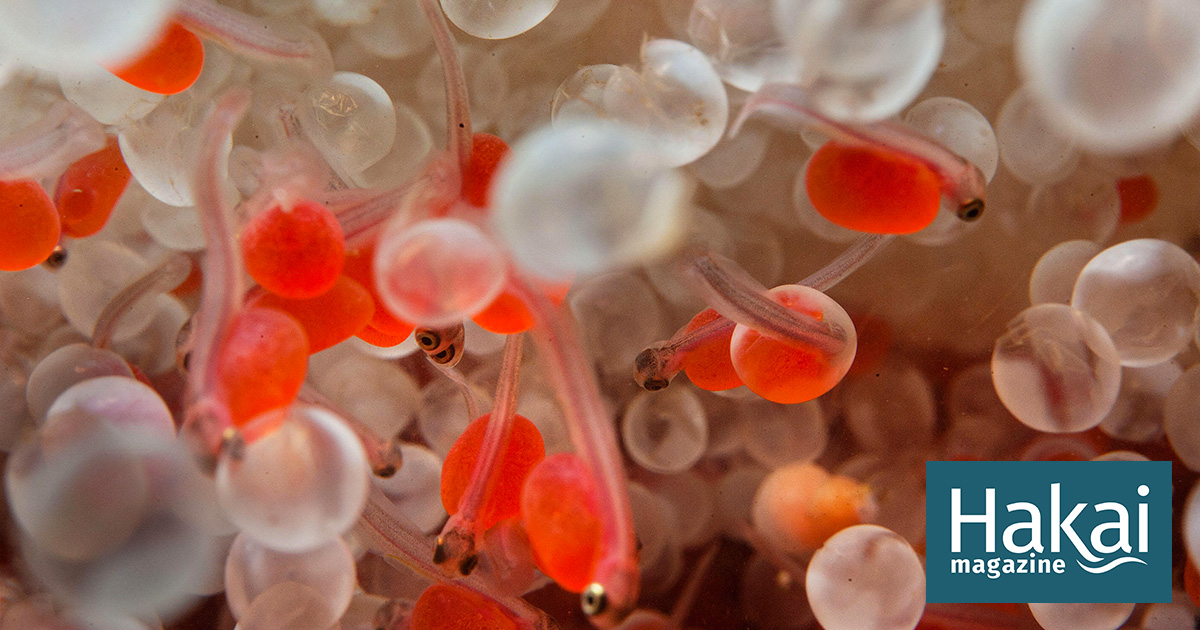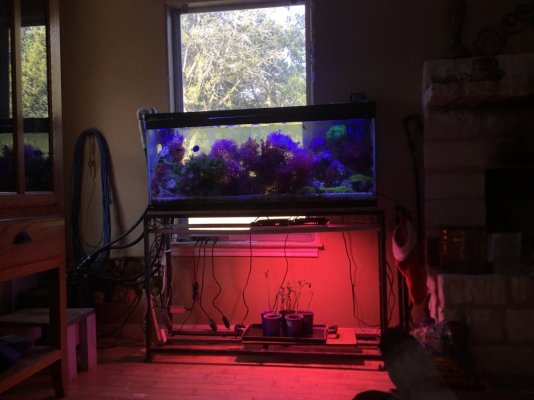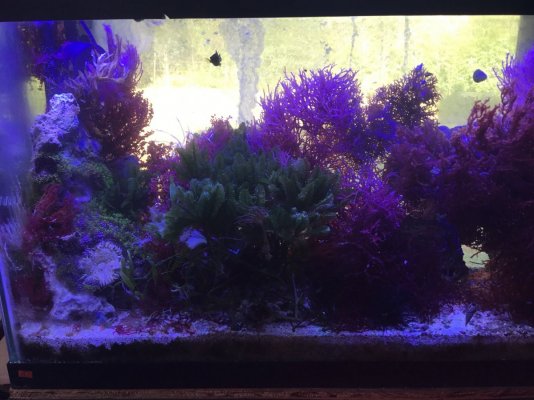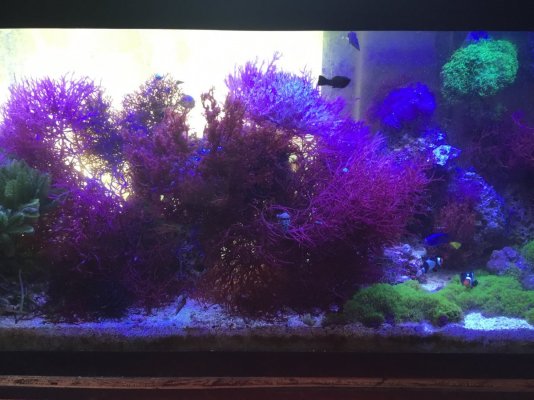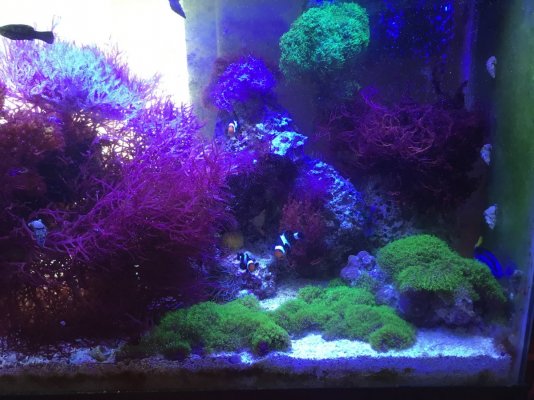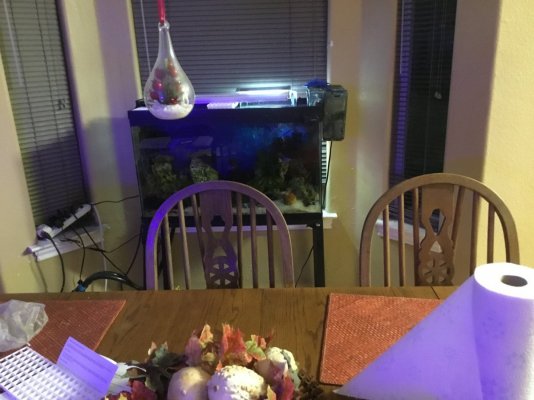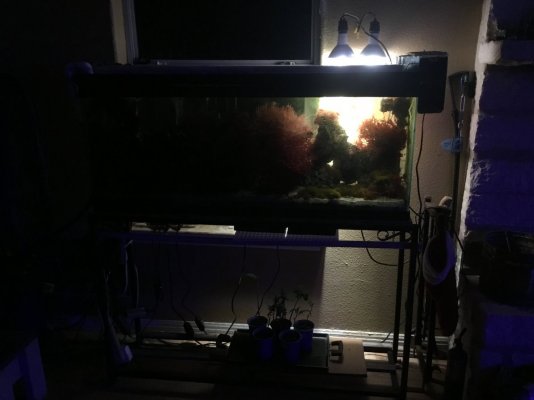- Joined
- May 6, 2020
- Messages
- 222
- Reaction score
- 91
I think that I may have figured out how to grow SPS corals without fish(using ammonium chloride, vitamins, etc). I still have to try to grow the corals, of course, but I think it is going to work. I have been growing red ogo very successfully, and there has been some type of algae starting to grow in the Rubbermaid stock tank. I think that if someone can grow algae well, without fish, I think it will be possible to grow SPS corals without fish. One of the main things that makes me think this is that I believe a very large majority of the fish mass from the fish that Adam from @Battlecorals has is from purely vegetarian fish(foxface and rabbitfish), and Adam is very successful at growing SPS corals. Since a very large majority of the fish are purely vegetarian, I think that a fishless sps tank can be successful(at least to some extent) by dosing certain vitamins, dosing ammonium chloride, probably dosing organic fulvic acid, having snails instead of fish, etc.
I am growing red ogo in a standard 20 gallon aquarium plumbed to the 100 gallon stock tank(the cheato was damaged during shipping). The 20 gallon aquarium is probably holding about 16 or 17 gallons, and has about 55 gph going into it, and I am using a dosing pump to dose an ammonium chloride solution into the aquarium. The red ogo growth happened over 16 days or less by the time it really started growing(I lost some of the pieces also).


I am growing red ogo in a standard 20 gallon aquarium plumbed to the 100 gallon stock tank(the cheato was damaged during shipping). The 20 gallon aquarium is probably holding about 16 or 17 gallons, and has about 55 gph going into it, and I am using a dosing pump to dose an ammonium chloride solution into the aquarium. The red ogo growth happened over 16 days or less by the time it really started growing(I lost some of the pieces also).







